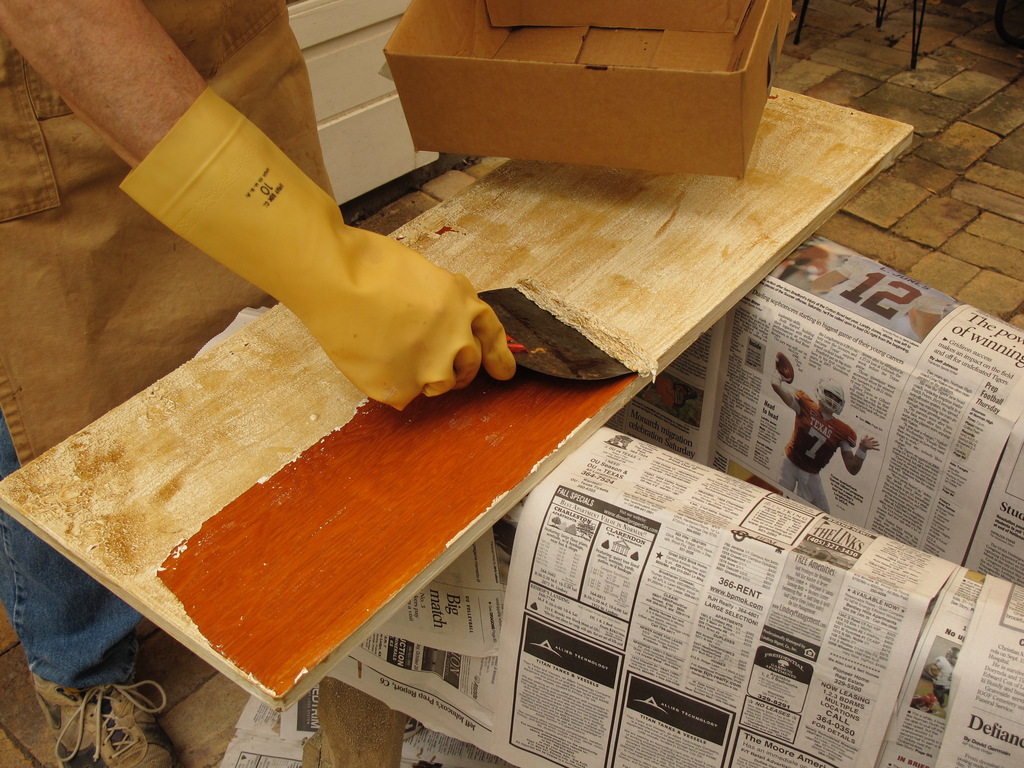We may receive a commission when you use our affiliate links. However, this does not impact our recommendations.

This is an example of how easily paint can be removed when it was applied originally over a clear finish.
My wife loves watching house restoration shows on TV. The other day she mentioned to me that the paint on every surface the host had stripped in this one house had come off so easily and cleanly. She has done a fair amount of paint removal herself and knew that this wasn’t normal.
So I explained that the wood must have been finished with a clear finish (probably shellac) before it was painted. Shellac because the house being restored was old and shellac continued to be used by painters until the 1950s when they started getting spray guns and switched to lacquer (because available lacquer solvents can be used to make the lacquer much easier to control in humid, hot or cold weather).
It’s a topic that continues to expand as I talk about paint and finish strippers. There are several factors that determine the ease of stripping besides just the strength of the stripper. One that I’ve mentioned is the coating being stripped. Some can be made to dissolve or blister much more easily than others. Another is whether there was a clear finish applied to the wood before it was painted. If there wasn’t, the paint will be in the pores of the wood and be much more difficult to remove.
I’m not advocating that you apply a clear finish before painting wood. I’m just pointing out some of the factors that influence the effectiveness of stripping paint.
Here are some supplies and tools we find essential in our everyday work around the shop. We may receive a commission from sales referred by our links; however, we have carefully selected these products for their usefulness and quality.








